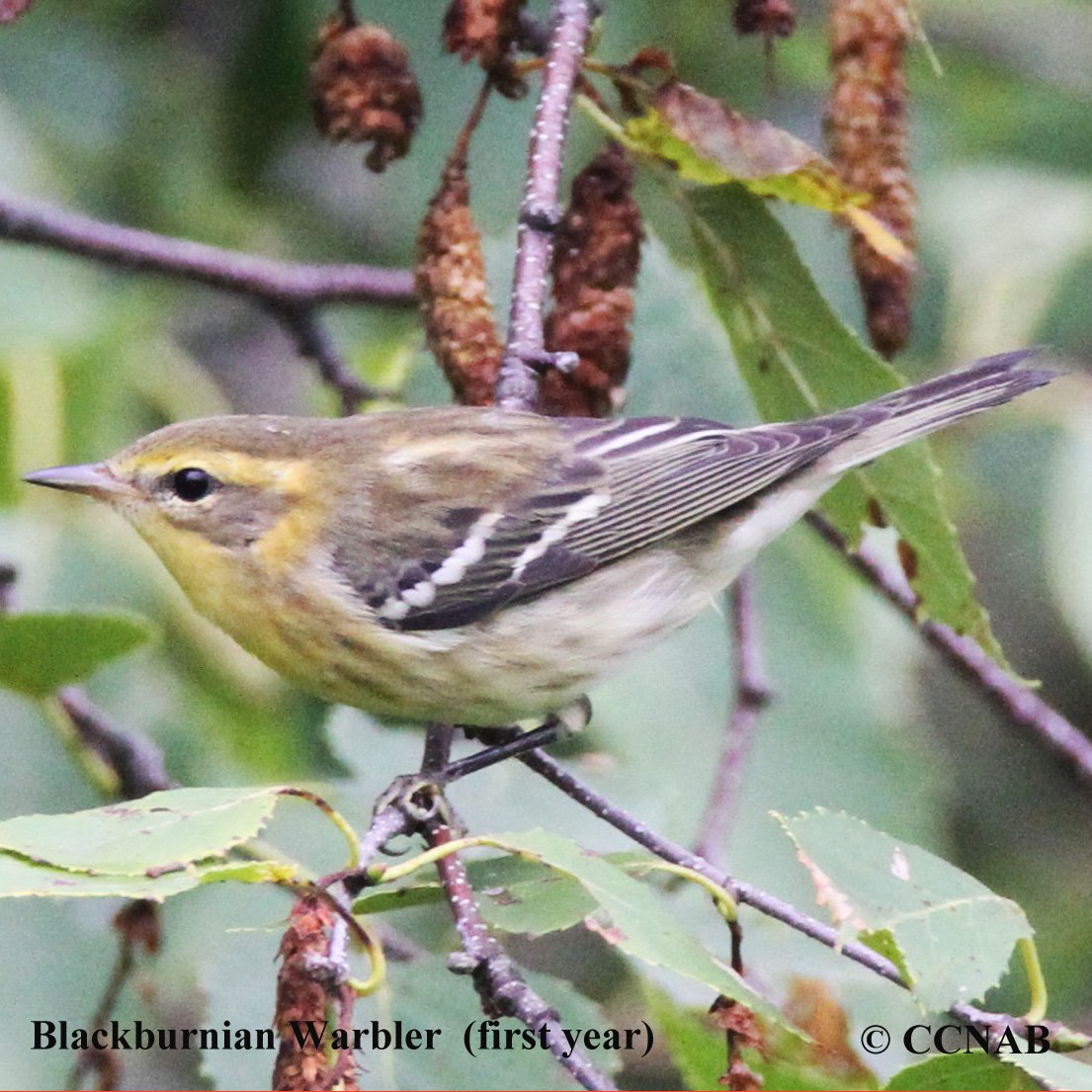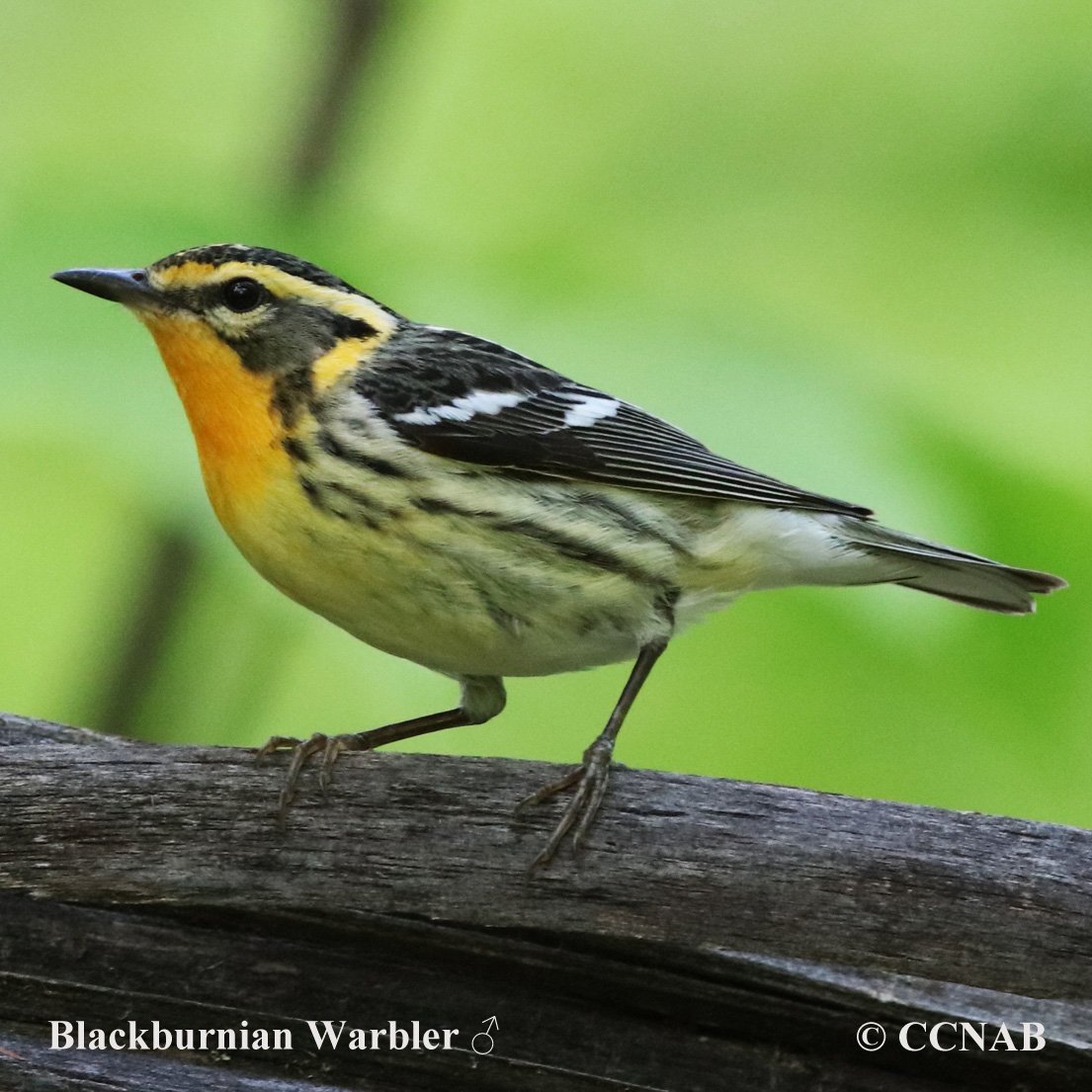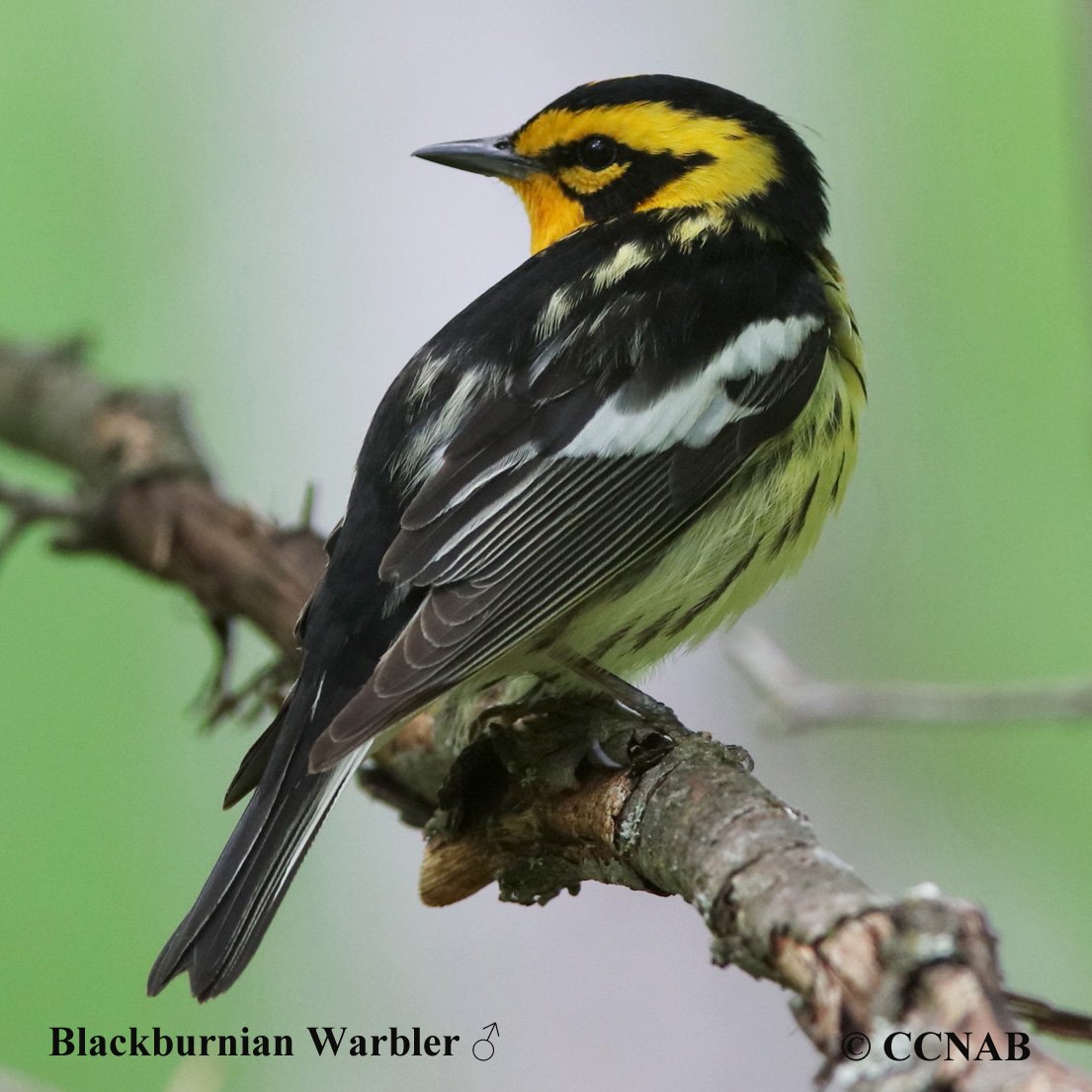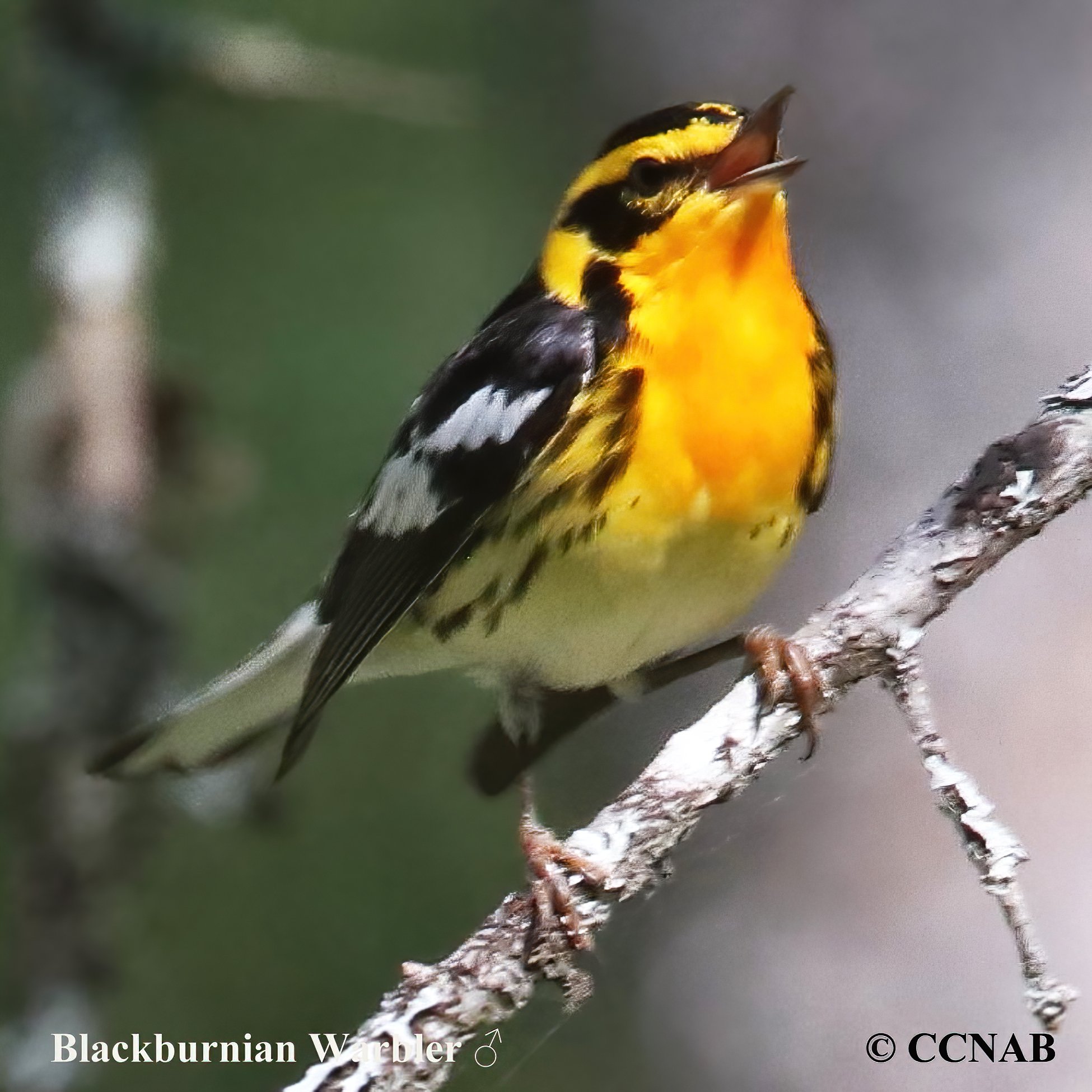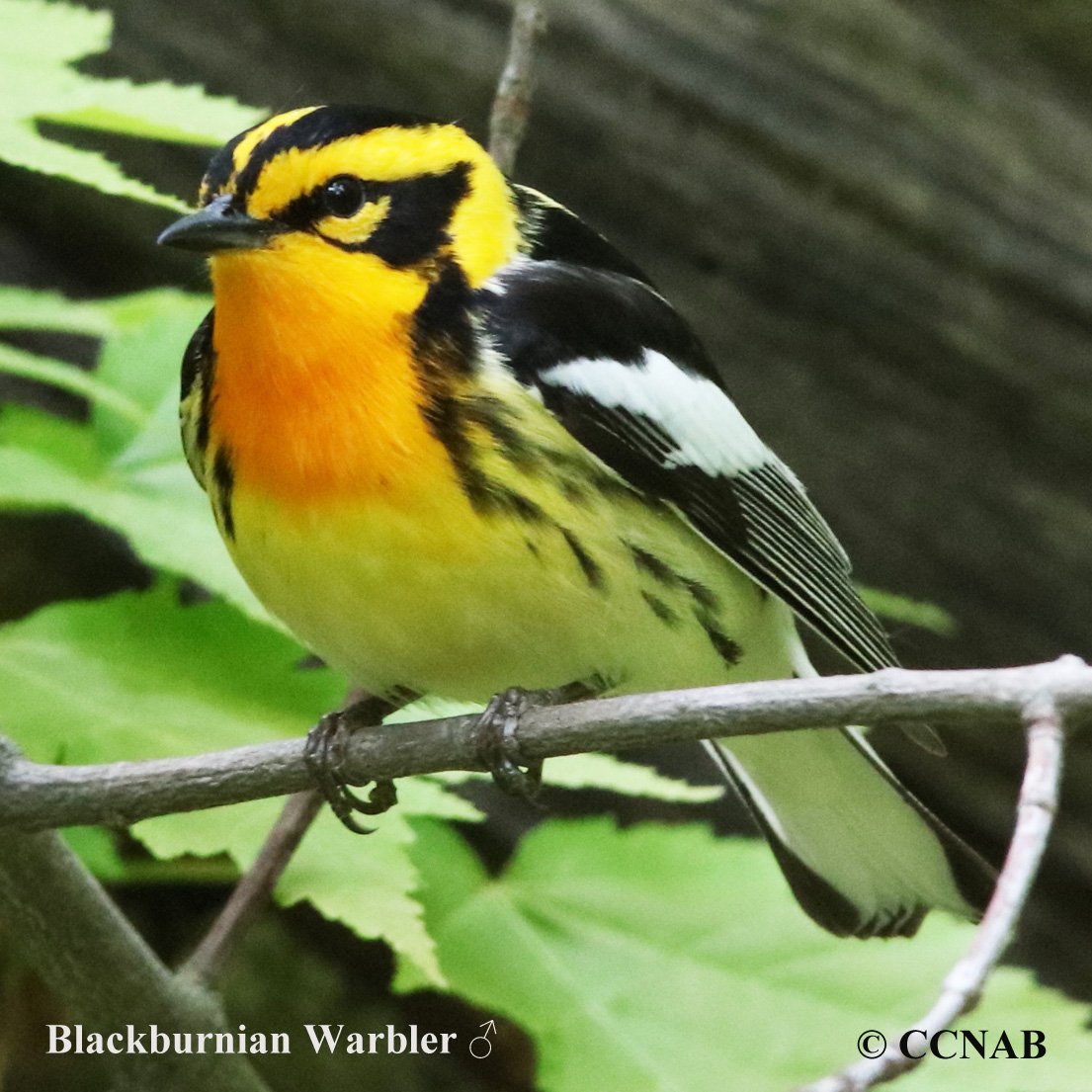North American Bird Search Box
This search box can be used to find bird species using bird's english, french or latin name, or to identify bird by its 4 letter Alpha Code
Field Guide for all the Birds of North America
Blackburnian Warbler
4 Letter (english names) Alpha Code: BLBW (1)
Paruline à gorge orangée
Setophaga fusca
Information, images and range maps on over 1,000 birds of North America, including sub-species, vagrants, introduced birds and possibilities
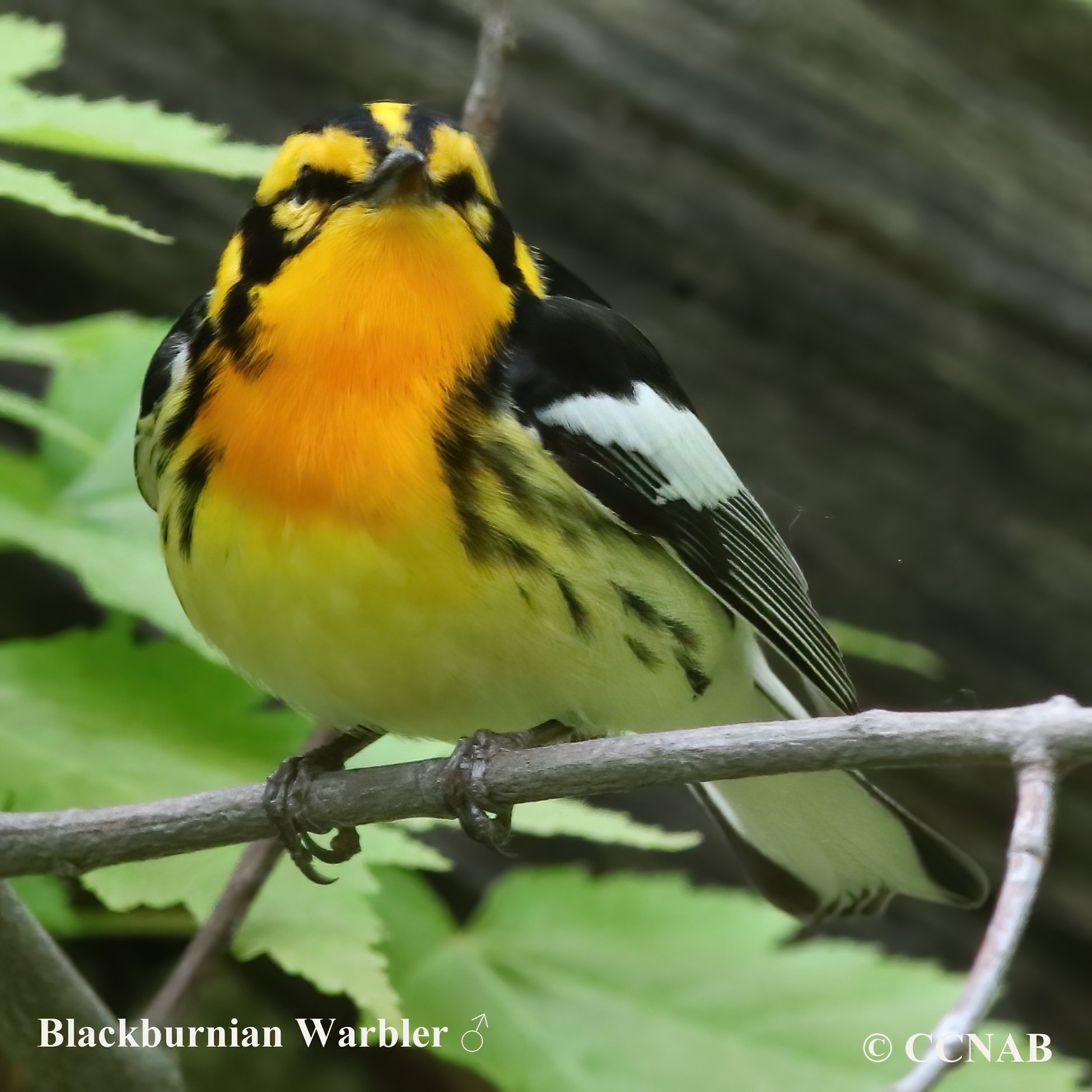
Species: The Blackburnian Warbler (Setophaga fusca) is found high in the crown of trees. This warbler prefers coniferous-type forests, hemlocks and spruce and sometimes pine. Most times it is hard to see, but with patience, one will see it moving about, gleaning insects off the foliage and maybe even picking insects out of the air.
Distinctions: The male and female have close similarities. The male is black, white and orange. Having a bright orange coloured forehead, face and throat, black crown, auriculars (cheeks), back, tail and wings with large white patches. Streaked flanks and an off white breast. The female has the same appearance, except that more yellow shows than orange. The juvenile resembles the female.
Voice: Call notes starts out with a high note then continues to get higher and higher. Once heard, it will become an easy bird to recognize in the future.
Nesting: Four to five white eggs with brown spots. Nest is usually built high in a conifer or on a limb away from the trunk, constructed with conifer needles, strips of bark and lichen.
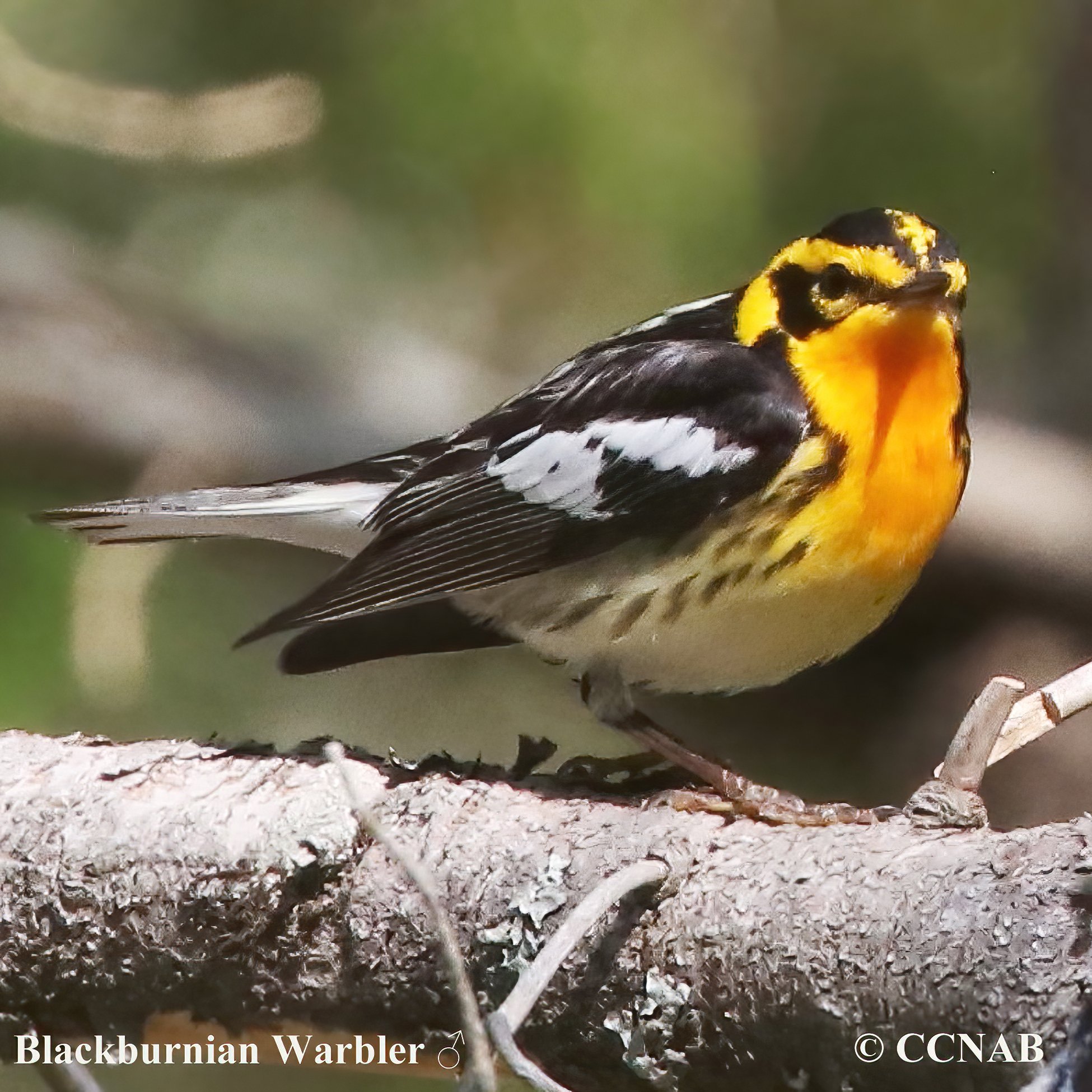
Life, Habitat & Pictures of North American Warblers
| B L | W W | W | Family | Latin Name |
|---|---|---|---|---|
| 5" 12.7cm | 8.5" 21.6cm | 0.35oz 9.9g | Parulidae | Setophaga fusca |
North American Birds Videos
- Click here - Male in breeding plumage
- Click here - Male in breeding plumage
- Click here - Male in breeding plumage
North American Bird Calls
- Click here
- Click here
- Summer
- Year Around
- Winter
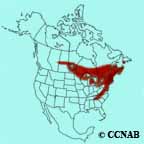
Distribution: Prefers old growth forests and found mostly in conifers, preferring hemlocks and spruce, but sometimes in deciduous. Seen in northwestern Newfoundland and Labrador, through the Maritime provinces, west to Alberta, then east to below the Great Lakes to the Carolinas and the Atlantic coast.
Reference to Other Bird Site:
ABA - American Birding Association This site represents an organization that maintains official records of all birds species that have been proven to have been seen inside the perimeters of the North American Continent and the surrounding bodies of water. Regular revised versions are posted to keep the bird list current at all times. This is the list used by all serious birders over their lifetime. You may be aware of the movie called the "Big Year". It was with this list that all the competing birders used in an attempt to set a new record as to how many bird species that could be seen by an individual birder in one calendar year.
